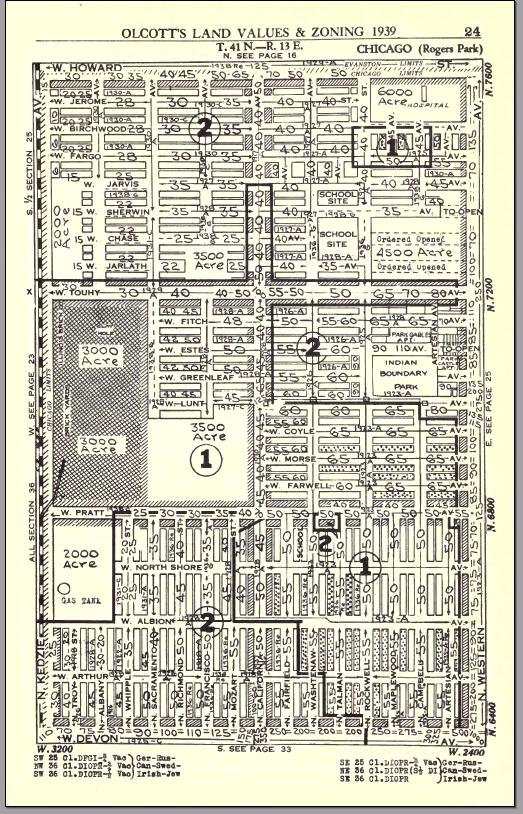One of the challenges for many beginning Henry George School students is to understand that land has value, and that the value of land is really not very difficult to determine. One example that we used to use was Olcott’s Land Values Blue Book, an annual publication that, until the early ’90s, reported the estimated land value for every block in Chicago and much of suburban Cook County. I don’t know exactly why the series was discontinued, but I assume it was because professionals now find the Internet a more convenient source of information.
The 1939 edition of Olcott’s has been scanned and posted to the Internet Archive. Below is an example page.

The numbers in most areas are value per front foot for a standard-sized lot. The book includes adjustment factors for use where lots are other than standard. For unsubdivided parcels, a value per acre is shown.